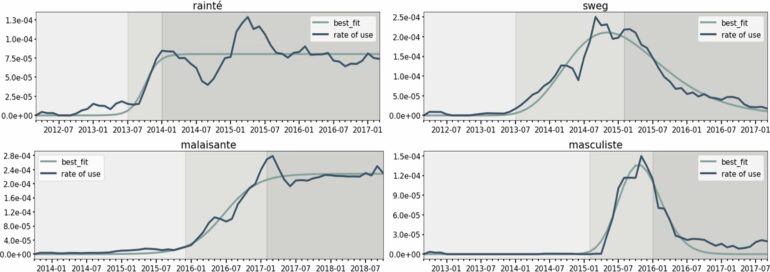The more centrally connected someone is within their social media network, the more likely that new words they use will become adopted into mainstream language, according to a new study published in PLOS Complex Systems by Louise Tarrade of École Normale Supérieure, France, and colleagues.
Language evolves within a social context and variations in a language are always in competition with each other. In everyday language, words are constantly being created, but not all these words persist.
In the new study, researchers analyzed more than 650 million tweets written in French between 2012 and 2014 to identify 400 words that were new to appear on the social media network X (then called Twitter) during that time. Then, they tracked the diffusion of these words over the following five years, and looked at the position and connectivity of users who adopted the words.
The team found that initial adopters of new words, or “lexical innovations” are similar to each other, regardless of whether the innovations later succeed (as language changes) or fade away (as temporary buzzes). However, in the later propagation phase for lexical innovation, there were statistically significant differences between changes and buzzes.
On average, the words that eventually persisted were used by people who were more central to their community, and remained in circulation at low levels for a longer period before entering a growth phase (18.5 months in circulation compared to 6.5 months for buzzes).
Words that became only temporary buzzes were used by people with less central positions within a social network and had a more rapid rise in use—followed by a rapid decline.
“Our research examines lexical innovations at scale across millions of social media users,” the authors say.
“We show that words adopted by users who are more central in their community and easily in contact with other communities become established in the language, and vice versa. Thus, the position in the network of speakers who adopt these words is enough to predict their fate.”
The authors add, “Doing sociolinguistics with digital data and computational methods offers the opportunity to scale up and reveal social dynamics at the population level.”
More information:
Tarrade L, Chevrot J-P, Magué J-P (2024) How position in the network determines the fate of lexical innovations on Twitter, PLOS Complex Systems (2024). DOI: 10.1371/journal.pcsy.0000005
Provided by
Public Library of Science
Citation:
How new words arise in social media (2024, September 3)



